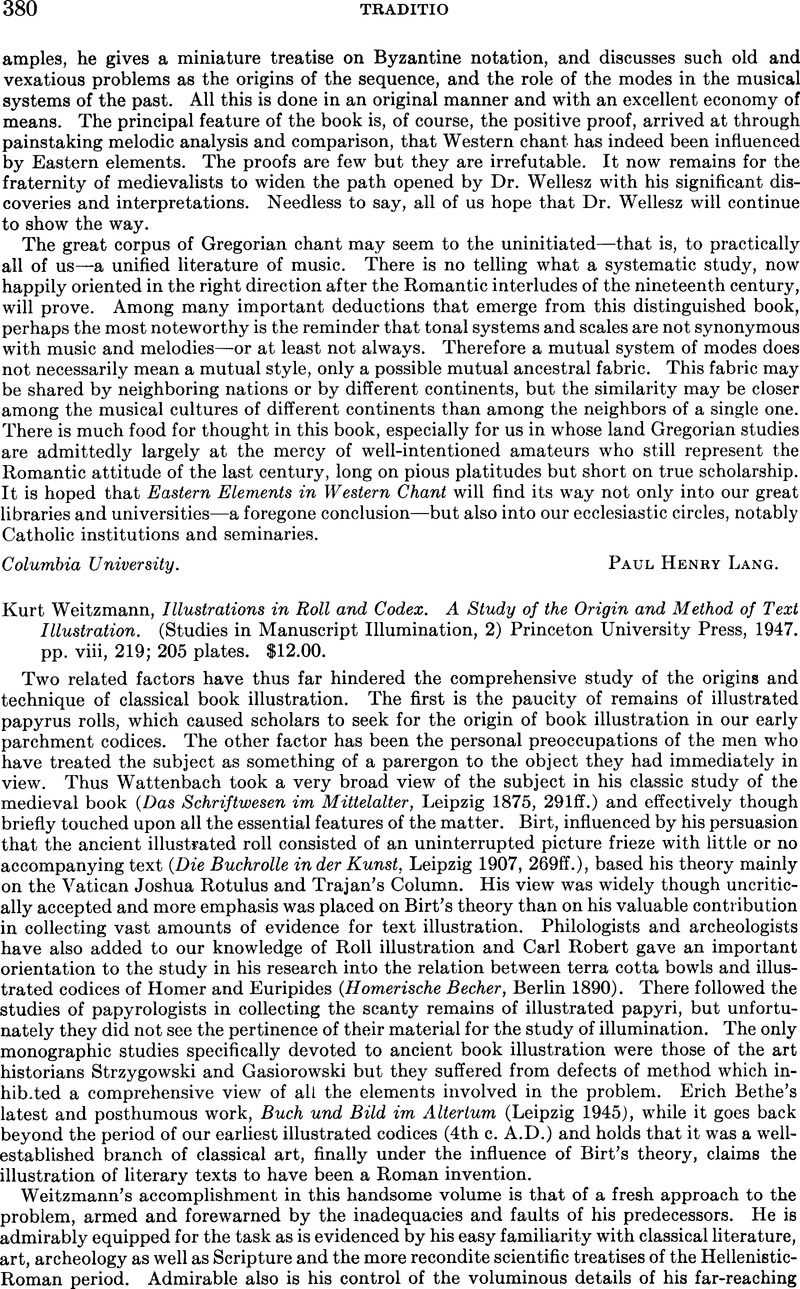No CrossRef data available.
Article contents
Kurt Weitzmann, Illustrations in Roll and Codex. A Study of the Origin and Method of Text Illustration. (Studies in Manuscript Illumination, 2) Princeton University Press, 1947. pp. viii, 219; 205 plates. $12.00.
Published online by Cambridge University Press: 29 July 2016
Abstract

- Type
- Book Reviews
- Information
- Copyright
- Copyright © 1948 by Cosmopolitan Science & Art Service Co., Inc.
References
1 Since hieratic script was written from right to left, the ‘open side’ was on the left of the column and miniatures were often imbedded in the text toward the left margin. In Greek and Latin MSS the opposite would be true.Google Scholar
2 The nature of the script, normally considered the province of the paleographer, can also be of great value to the textual critic. The different scripts which preceded in time that of the manuscript in question can be of immense help in determining the cause of the apparent misunderstanding by the scribe of the script of the immediate archetype, whence an error might come into the text. Thus how the manuscript is written can suggest the provenience of the archetype and be valuable for the reconstruction of a pure text.Google Scholar
3 It would seem that the numerical possibilities of accidental variants are greater in transcribing a text than in copying a miniature. The scribe, a prey to inattention, carelessness, fatigue or other emotional state might be led into confusion by the partial resemblance of the form of letters in different scripts; he may confuse abbreviations, symbols, numerals; he may join letters wrongly into words when he is copying from scriptura continua; the context may lead him astray by the influence of adjacent words, grammatical forms, homoioteleuton, haplography, dittography, marginal or interlinear glosses and transpositions apart from larger omissions due to injury to the manuscript. Any or all of these errors are possible in every line of the text; the pitfalls of the miniaturist would hardly be so numerous.Google Scholar


